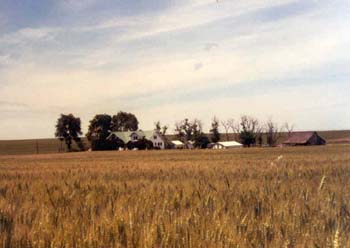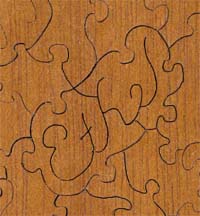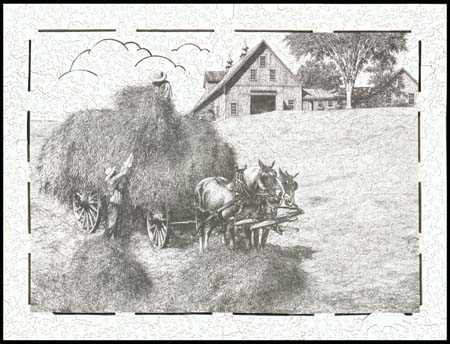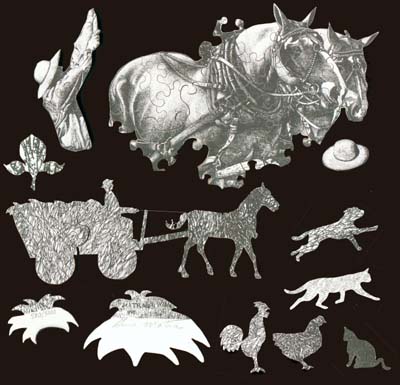
|

|
Remembering the Family FarmOne of my customers was browsing my site looking at some of the puzzles and artwork. She came across Gene Matras' pen and ink drawing of haying, and thought immediately of the farm she grew up on. Now Gene is a New England artist, and, at least to me, his haying print looks exactly like New England. However, my customer, an Oregonian, sent me a picture of her family farm and sure enough, it looked just like Gene's drawing. We set about creating a memorable puzzle. Below is Gene's print followed by a picture of her childhood farm.
The house and barn date back to the 1920's. Other buildings were added over the years. The family at first leased and then bought the farm from a Umatilla Indian family. It passed from her grandparents to her parents, who sold it to her father's namesake, the son of their good friend and neighbor. My customer wanted to capture the history of the farm in the puzzle and requested I put in the names of all the owners. Even though the puzzle is large, putting 8 names in the puzzle is a challenge. Words in puzzles are either individual letters or a long thin piece that is the word. Either method would take too much space and make the puzzle cumbersome or fragile to put together. I invented a unique way to put in all 8 names and to show the relationship of each name to the others and in descending order. Each name was cut as a combination of accent lines in the pieces and boundaries between pieces. They actually show up much better from the back. You can see the name "Ethel" in two puzzle pieces below.
There were other things that made this puzzle special. My customer requested a multi-piece figural of a hay wagon and horse and asked that I surprise her with a few other figurals, some tricks, and a unique edge style. I knew she liked cats, so two barnyard cats got added along with a hen and a rooster (she said one of the buildings in her picture was a chicken house) and a dog. Since this picture is black and white, silhouettes and cutouts naturally complement the style. I put in cloud silhouettes. I cut straight edges just in case she decided she wanted to frame it later on. However, I cut a mini-frame with sectional silhouettes and LOTS of fake edges and corners to make the boundary and the puzzle more challenging.
| |
|
| |








